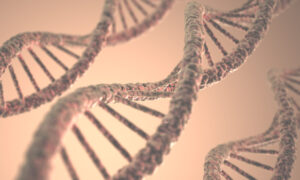SQA-V GOLD Morphology Algorithm Compliance with WHO 4th and 5th (strict Kruger) Assessment Criteria
Issue date: October 25, 2012
Attn: All SQA-V/SPERMALITE/QwikCheck™GOLD (All WHO 4th & 5th compliant software)
Background:
The SQA-V GOLD system reports “Normal Morphology” in accordance with the WHO 4th or 5th edition manual criteria (based upon the selected SQA-V software version – 2.48 reports WHO 4th and version 2.60 reports WHO 5th criteria). Both WHO 4th and 5th edition guidelines and the SQA-V morphology are based on assessing sperm in compliance with strict Kruger criteria.
WHO 4th ed. manual, p. 19: “Strict criteria should be applied when assessing the morphological normality of the spermatozoon (Menkveld et al., 1990)”. Then the classification scheme is described. “This classification scheme requires that all borderline forms be considered abnormal (Kruger et al., 1986; Menkveld et al., 1990). Using these criteria of classification, there are data to show the predictive value of sperm morphology for fertilization in vitro (Kruger et al., 1986, 1988; Kobayashi et al., 1991; Enginsu et al., 1991; Liu & Baker, 1992; Ombelet et al., 1995)”.
As it is seen above, the WHO 4th edition manual refers to the following publications regarding morphology assessment: Kruger et al., 1986; Menkveld et al., 1990. The WHO 5th edition manual sites the following references: Kruger et al., 1986; Menkveld et al., 1990; Coetzee et al., 1998. In both manuals, it is recommended that all borderline forms should be considered abnormal. The basic criteria for Kruger’s method of assessing normal spermatozoa, is to identify as normal those spermatozoa that have the potential to successfully migrate through the cervical mucus on the way to the egg. This is different from previous methods that evaluate sperm based on shared traits among a group of presumably fertile men rather than the Kruger method for assessing the potential for functionally successful sperm to fertilize an egg.
The only difference between WHO 4th and 5th criteria is based on the cut-off for normal.
The SQA-V GOLD morphology algorithm was developed by assessing stained smears of semen samples under the microscope in compliance with the WHO manual guidelines for assessing normal morphology per strict criteria (Kruger). In parallel, the varying electronic signals generated by the motion patterns of sperm cells in relation to the large overall cell population were recorded (10,000+ spermatozoa analyzed in the 300 micron depth SQA-V testing capillary). The SQA-V algorithm was then developed to “read” these electronic signals and “report” them as a % normal morphology in accordance with the microscope readings performed on the same samples according to the WHO 4th and 5th edition. Thus, the % normal morphology reported by the SQA-V is in compliance with strict Kruger criteria and follows the same basic premise, which is to look at the potential for the sperm to functionally migrate through the cervical mucus on the way to fertilize an egg. For this reason, the SQA-V GOLD reports Normal vs. Abnormal morphology as opposed to a full Morphology differential of specific defects.
The SQA-V GOLD also has a 500x visualization system that allows the operator to verify the test results by microscopic examination. Based on both the automated reading and the ability to verify the results visually, the SQA-V can be used effectively to evaluate % normal morphology and provides the ability to reflux to the onboard visualization when indicated.
The Cleveland Clinic discusses the SQA-V morphology in the article published in Fertility and Sterility: “Automation is the key to standardized semen analysis using the automated SQA-V sperm quality analyzer”. Agarwal A. and Sharma RK concluded that the automated SQA-V analyzer is more precise and shows the ability to accurately classify normal versus abnormal sperm morphology (Fertil Steril. 2007 Jan;87(1):156-62).
Akashi T. et al. investigated the usefulness of the sperm quality analyzer SQA-V for the assessment of sperm quality in infertile men. Significant correlations of sperm concentration (p < 0.0001), sperm motility (p < 0.0001), and normal morphology (p < 0.0001) were observed between SQA-V variables and manual semen analysis (Arch. Androl. 2005 Nov-Dec;51(6):437-42).
Shimada T et al showed that morphology reported per Kruger strict criteria by the SQA-V was predictable for fertilization and pregnancy rate outcome (Jpn J Fertil Steril 2000;45:95-100).
Additional publications and the complete Cleveland Clinic article can be found by following this : https://mes-global.com/support/medical-electronic-systems-studies-and-publications



